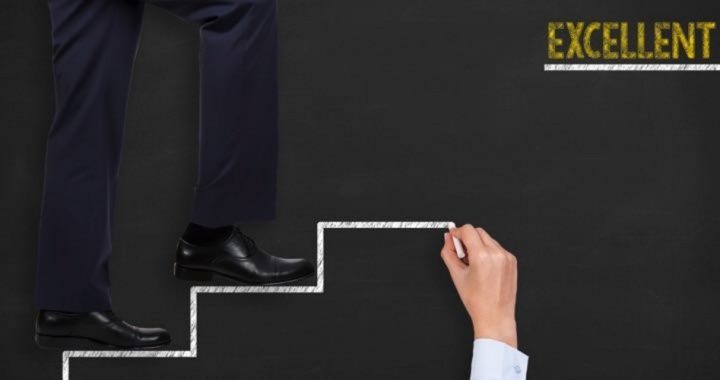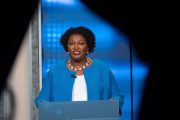
The Gallup Poll — a poll with a long history — has released its job-approval numbers for President Donald Trump, which have reached the highest levels recorded, at 46 percent.
“The latest rating extends the upper limits of President Donald Trump’s narrow approval rating range by one percentage point, from his previous range of 35 percent to 45 percent,” the Gallup Poll reported. The poll was conducted from April 17 to April 30, mostly after the public release of the report of Special Counsel Robert Mueller on April 18.
While one could look at the poll, and conclude that a president needs to be over, or at least near, 50 percent in order to be reelected, several factors need to be considered in order to give the polling figures their proper evaluation. First of which is that Trump has spent virtually his entire presidency under the cloud of charges that his campaign conspired with the Russian government to ensure his first election. With the release of the Mueller Report, which concluded that there was no such collusion, the ceiling for Trump’s approval rating probably just got higher.
Looking at where previous presidents stood in the Gallup Poll at this point of their presidency should also give Trump supporters confidence that the president will be reelected in November 2020. For example, President Barack Obama’s job-approval rating was only 44 percent at this point in his presidency (April 2011), and Obama won reelection in 2012. (However, it should be noted that Obama’s share of the popular vote declined from 2008, when he received 53 percent, to 51 percent, in 2012 — the only time that a president has won reelection with a lower percentage of the popular vote than in his first election).
Two more examples provide additional perspective as to whether Trump will win a second term. At this stage of his presidency, President Richard Nixon’s approval ratings were also below 50 percent, and Nixon won in a landslide in November 1972, taking 49 states, and crushing his Democratic Party opponent, George McGovern, by 18 million popular votes.
President Ronald Reagan was in even worse shape as he began 1983, having slipped to a mere 35 percent approval rating. In November 1984, he matched Nixon’s 1972 victory, carrying 49 states as well, losing only Minnesota, the home state of the Democratic Party nominee, Walter Mondale. It should be noted that in January 1983, the country was just emerging from a very severe recession, which had driven unemployment rates to almost 11 percent. By 1984, however, the economy had begun a long expansion, contributing greatly to Reagan’s triumphal reelection that fall.
In contrast, the economy under President Trump is already booming, with the unemployment rate the lowest it has been in half a century. Many have wondered why Trump has not enjoyed more of a benefit from such a good economic situation, with his own approval ratings. Perhaps the public concern over the Mueller probe has kept Trump from enjoying increased public approval for the first two years of his presidency, and now that those concerns are in the rear-view mirror, we can expect some improvement in Trump’s numbers in the Gallup and other polls.
Despite the roaring economy, Democrats polled only gave Trump an approval rating of 12 percent. In stark contrast, Republicans were recorded as approving at a rate of 91 percent in the Gallup Poll. Trump’s standing among Independents is at 37 percent.
Other factors that must be noted in evaluating polling results is that presidents are not reelected through a referendum. In other words, voters must choose either the president or his opponent, and while some voters might not approve of his job performance, they may decide that they would prefer him over the person who is running to replace him. As of now, none of the Democrats presently running to challenge Trump appears particularly formidable. But that could change.
Which leads us to the next factor to consider when examining polling results. Even if the poll is conducted in a non-biased and scientific manner (which is not always the case), it is still only a “snapshot” of public opinion, which can change quite quickly, depending upon events. Senator Edward Kennedy appeared to be a shoo-in to defeat President Jimmy Carter, a fellow Democrat, at this point in the 1980 campaign (the spring of 1979). But Carter’s approval rating shot up after the country rallied around him in the early aftermath of the Iranian hostage situation in the late fall of 1979, and Kennedy’s collapsed as the voters were reminded of the Chappaquiddick Affair — an incident in 1969 when Kennedy left a young woman to die in his submerged automobile off the coast of Massachusetts.
Another factor is that pollsters are not as careful to use precise sampling methods this far out from the election. As we draw closer, polling tends to be more accurate, as the pollsters are far more careful, not wanting to be exposed as either incompetent or biased, or some combination thereof.
The bottom line? The chances that Trump will be reelected are quite high, but unforeseen events could either cost him a second term, or could give him a reelection victory like Nixon and Reagan. Considering the steady drum-beat of the liberal media’s hatred of all things Trump, the fact that his approval rating is the highest of his presidency indicates that Trump may have “weathered the storm,” and be on his way to a second term.
Photo: phototechno / iStock / Getty Images Plus



